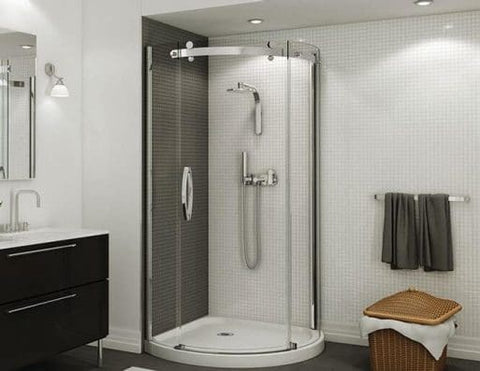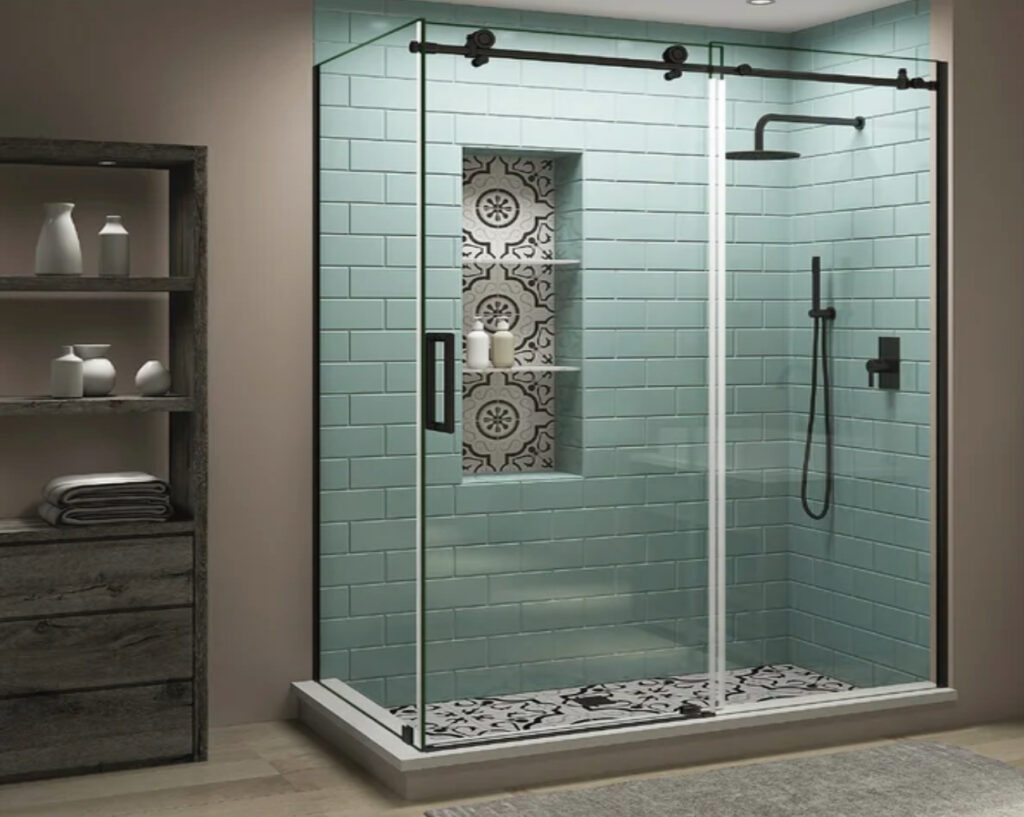What're your thoughts about Simple ways to Install a Shower Cubicle on Your Own?

A successful shower setup requires cautious preparation and also a great deal of job. Most of the times, you will need to do 3 types of tasks: framing wall surfaces, setting up the plumbing, and completing walls.
Prep work
First of all, you must choose the sort of shower that you wish to set up. It is very important to ascertain whether the selected shower is capable of managing particular systems as well as can control a secure level of water via the central heating boiler. The majority of shower systems nowadays are created to be versatile to different water stress (such as stored warm water as well as cool keys).
It is additionally vital to think about the water pressure and the planning of the piping and also drainage for the shower
Various Types of Shower Units
- Push-on Mixer: The hose pipe as well as spray parts of the push-on mixer shower unit can be connected to the bathroom faucet based on your need, and also the water temperature level can be readjusted through the faucets. Push-on mixers are cheap and extremely straightforward to set up. Nevertheless, although the hose link is simple, it is conveniently displaced. Furthermore, it is troublesome to change the temperature.
- Bath/Shower Mixer: The hose pipe and spray of this kind of shower are combined with a bath mixer tap, and the temperature can be changed via the bathroom faucets. It is a really cheap choice and also no extra plumbing is involved. Nonetheless, the bath/shower mixers also struggle with inconvenient temperature control alternatives.
- Handbook Mixer: The tube as well as spray of a hands-on mixer shower unit belong of the wall device and the hot and cold water materials are connected to a solitary valve The temperature and pressure of the water are managed with either one or a variety of handles (in extra expensive showers). Although temperature level control is a lot easier in hand-operated mixer kinds, they are a lot more costly than the previously stated mixers. They also call for additional plumbing of hot and cold supply of water pipes.
- Thermostatic Mixer: The tube as well as spray of this shower kind belong of the wall device and also the cold and hot water products are connected to a solitary shutoff below as well. It is total with an integrated stabiliser to self-adjust the water temperature as well as to stop it from coming to be also hot. One of the biggest benefits of a thermostatic mixer shower type consists of hassle-free temperature level control. Nevertheless, it is the most pricey of the different mixer choices.
- Power Shower: A power shower is a solitary device containing a powerful electrical pump that is capable of altering both the water pressure and also temperature. This type of shower can be fitted if there is water supply from a cold water tank and a hot water cylinder. A power shower makes the change of both stress and temperature level very easy. On the other hand, it is unsuitable for water warmed directly by the shower or where the water is supplied by a combination boiler under mains stress.
- Electric Shower: An electrical shower is plumbed into a mains cold water supply as well as it heats up the water electrically. It is very important to keep in mind that for this shower type to be set up, the keys pressure requires to be at least 0.7 kg/sq cm (10lb/sq in). The device permits the temperature level and stress to be adjusted via a knob. Versions with temperature stabilisers are better as they stay untouched by other faucets elsewhere in operation within the home. A significant drawback of electric showers is that the control knob only permits the choice of heats at much less pressure, or lower temperatures at a higher pressure. This is troublesome in the winter season when the spray is typically weak and the mains water is cooler. Nevertheless, this trouble is tackled in some models which are readily available with a winter/summer setting.
Technique
Relying on the kind of shower you wish to mount, the shower head should either be suited order to avoid its contact with the water in the bath below or the base tray, or it has to have a check valve.
Before beginning, it is recommended to mark the placements of the shower head and control, as well as to prepare the pipe-work included. In addition, the drainage system to eliminate the waste water will need to be intended. Both settings of the cable path as well as the shower button will likewise need to be considered if a rapid or electrical shower system is being installed.
Make use of the guideline guide offered with the shower unit to fit the shower control.Before fitting the pipelines that will supply the water to the shower system, it is necessary to cut off the supply of water. In order to secure the pipes, they ought to be given a waterproof covering as well as also fitted with isolating valves. The pipelines can then be hidden into the wall surface and plastered over to neaten the general look.
Fit the base tray, shower head, as well as fittings.
Connect the primary shower control to the pipelines that will be providing the water (This might need a women screw thread adapter).
Reconnect the water supply as well as examination the pipelines for any leaks, as some might need firm.
If you are mounting an electric shower, bear in mind to turn off the electrical energy supply prior to making any electrical links. When these links have actually been made (there ought to be assistance within the instruction manual), the power supply can be changed back on.
Adjusting Water Pressure to Match Your Shower
The cold water storage tank can be lifted to a greater height (sometimes as little as 150mm (6inches)) by fitting a strong wooden support beneath it - potentially made up of struts as well as blockboards. If you choose this choice, the primary and circulation pipelines will certainly likewise need to be raised to meet the new height of the storage tank.
Conversely, a booster pump (a solitary pump or a dual/twin pump) can be fitted. Whichever type is picked, it should be connected right into the power supply in order to operate.
Piping and also Drain
It is best to make use of 15mm size supply pipelines, and make the go to the shower as short as well as straight as feasible so as to preserve optimal stress and also minimise heat loss. Additionally, by reducing making use of joints for pipe edges, you can decrease the resistance in the circulation of the water supply. You can attain this by flexing the pipelines instead.
The Majority Of Common Mistakes
- Breaching or disregarding neighborhood code limitations.
- Utilizing pipelines that are also little.
- Affixing copper to galvanized without utilizing a brass or dielectric suitable between both.
- Not utilizing tape or pipe compound at threaded joints.
- Not leveling your fixtures when mounting them.
- Not installing an air gap loading for components.
- Reducing supply stub outs as well brief to mount the shutoff valves onto after the finished wall is in location.
- Not correctly lining up tubes into fittings or stop valves. (Compeling the nut onto the compression ring at an angle when the tubing is at an angle will trigger a leakage.).
- When transforming the water back on in your home, constantly run the outdoors tube shutoff or purge your commodes to hemorrhage dust and also air from the lines. This particles can create problems in your sink taps as well as other plumbing trim.
How Do You Install a Shower? Follow This Guide
Installing a Shower at a Glance
- Tools & Materials: Level, electric drill, caulk, hole saw, cedar shims, shower unit
- Step 1: Drill pilot holes
- Step 2: Prep fixture holes
- Step 3: Move unit into place
- Step 4: Caulk corners and base
- Step 5: Attach door
- Step 6: Install shower pan
Whenever plumbing is involved in a DIY project, people worry about what might go wrong. The truth is that installing a shower isn’t that complicated, and you can save a lot of money by doing it yourself. You shouldn’t need to make any alterations to your plumbing to complete the job, and most of the tools you need will be provided in your new shower kit.
Can I Install a Shower Myself?
Even if you’ve never installed a shower before, you’ll find this to be a project that is perfectly suited for DIYers with a moderate level of experience. Whether you're doing a bathtub conversion or installing a new stall, most of what you need comes in shower kits that you can purchase from a hardware store. The first thing you need to do is determine what type of shower stall you want.
Single-panel stalls are the easiest to install because they come preassembled. All you need to do is put them in place. Multi-panel showers require a few additional steps, but you’ve got more control over the appearance of your unit. Multi-panel units are also much easier to handle if you’re going to do the installation without any help.
Be sure to take all appropriate safety precautions, such as wearing eye protection and gloves. When you’re removing or installing a shower unit, you might kick up debris that could hurt your eyes. You’ll also need to work with equipment that will get extremely hot, so be sure to have safety gloves handy.
Tools and Materials
- 2- to 4-foot level
- Electric drill with a 1/8-inch drill bit
- Caulk
- 2-inch hole saw
- Cedar shims
- The unit itself
Before You Begin: Prep the Space
It’s highly important to measure your space accurately before putting the stall in. Measuring from the floor upward and from each corner outward will ensure you’ve got the right measurements. What you’re looking for is where the plumbing apparatuses are going to come through the stall. Transfer these measurements over to the back of your unit by drawing the locations of these holes using a pencil or marker.
Pull out your old shower and make sure to scrape off all the old caulking. Be thorough because you want to work with smooth surfaces for the best installation. Once you’ve pulled out your existing shower, you need to make sure that the floor is clean and dry. The best way to clean debris is with a shop vacuum, as it’ll soak up water and dirt together.
If you’re experiencing any plumbing issues, such as low water pressure, this is a perfect opportunity to solve them. Make sure that the pipes themselves are not in need of patching and clean your showerhead. When you turn the water back on after your project, check the pipes for signs of wear or disrepair. Anything beyond minor repairs should be handled by a plumber, and this is the best time to bring in a professional.
If the floor has any moisture at all, don’t proceed until it’s completely dry. The last thing you need is for the floor to rot or invite mold and mildew into your base. Once everything is dry, apply waterproof wallboard to the walls. This can be attached with screws or nails, then sealed with caulk so that water doesn’t seep into any crevices.

Hopefully you enjoyed reading our section on How to Install a Shower Enclosure . Thanks for spending some time to read our piece. Sharing is nice. You won't know, you might be helping someone out. Thanks a lot for going through it.
Book
Comments on “Full Step-by-step Guide for Installing a New Shower Unit”